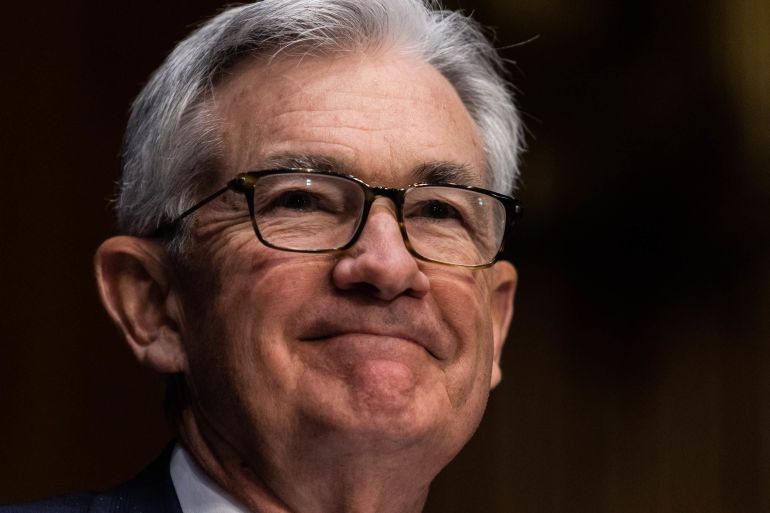Prepare for liftoff: Fed signals March interest rate hike
The US Federal Reserve left interest rates unchanged, but Powell said the Fed is ‘of a mind’ to raise them in March.

The steward of the United States economy, the Federal Reserve, left interest rates unchanged at the end of its two-day policy-setting meeting on Wednesday, but it did prepare the ground for its first pandemic interest rate hike.
During his post-meeting press conference, Federal Reserve Chair Jerome Powell told reporters that the Fed’s policy-setting committee will likely raise interest rates when it meets in March, a move many expect.
Keep reading
list of 4 itemsInflation is the buzzword at US Fed chief’s confirmation hearing
Looming Fed rate hikes have emerging markets dreading deja vu
Tech rebound: US stocks jump higher before Fed decision
“I would say that the committee is of a mind to raise the federal funds rate at the March meeting, assuming that conditions are appropriate for doing so,” said Powell.
US stock markets have been whipsawed in recent days by investor concerns over the Fed’s looming liftoff.
No one really expected the Federal Reserve to start hiking interest rates on Wednesday. What’s been roiling markets of late are concerns over just how hawkish the Fed will become.
During his press conference, Powell unfurled his hawkish wings, telling reporters, “I think there’s quite a bit of room to raise interest rates without threatening the labour market.”
The major US stock market indexes, which had been positive ahead of the meeting, turned negative following that remark.
The Fed slashed interest rates to near zero in the opening days of the coronavirus pandemic in 2020, and unleashed a slew of extraordinary measures to nurture the economy through the unprecedented disruptions created by lockdown that threw 22 million Americans out of work.
But the economy – and the jobs market – have been recovering strongly.
“The labour market has made remarkable progress and by many measures is very strong,” said Powell. “Job gains have been solid in recent months, averaging 365,000 per month over the past three months.”
Disruptions do still exist, but now it is supply-chain snarls and shortages of workers and raw materials that are raising costs for businesses and causing problems.
Businesses are increasingly passing on at least a portion of those higher costs to consumers, whose spending drives some two-thirds of US economic growth.
Inflation, especially for essentials like food, fuel and rent, is also hardest on low-income households, because it eats up a larger share of their financial resources.
In December, after the US central bank started pivoting monetary policy away from job-boosting cheap money and towards reining in inflation, it signalled it would raise interest rates at least three times this year.
But inflation is running at its hottest in nearly 40 years. And while the US created a disappointing 199,000 jobs in December, it wasn’t because not enough businesses are hiring. Jobs creation is suffering from too many businesses chasing too few available workers.
In fact, workers feel so confident about their job prospects that they are saying “I quit” in record numbers, while businesses have been offering better pay and benefits to lure scarce job seekers.
“Employers are having difficulties filling job openings and wages are rising at their fastest pace in many years,” said Powell.
That has had led some Wall Street economists – notably over at Goldman Sachs – to predict that there could be four rate hikes in the cards this year, not three.
Powell also addressed the disruptions caused by the Omicron variant of COVID-19, which has led to a wave of workers calling in sick and harmed activity in virus-sensitive sectors.
The Fed chief said that while he expects Omicron will weigh on growth this quarter, “if the wave passes quickly, the economic effects should as well and we would see a return to strong growth.”